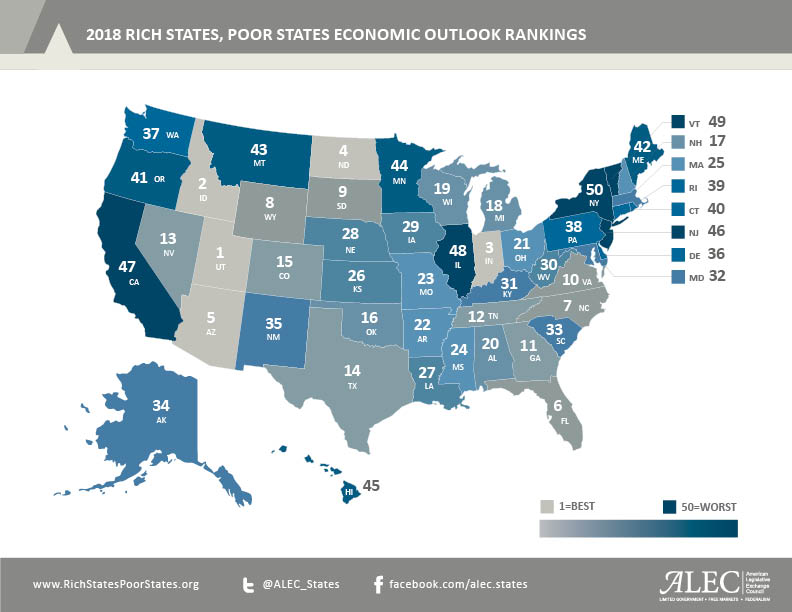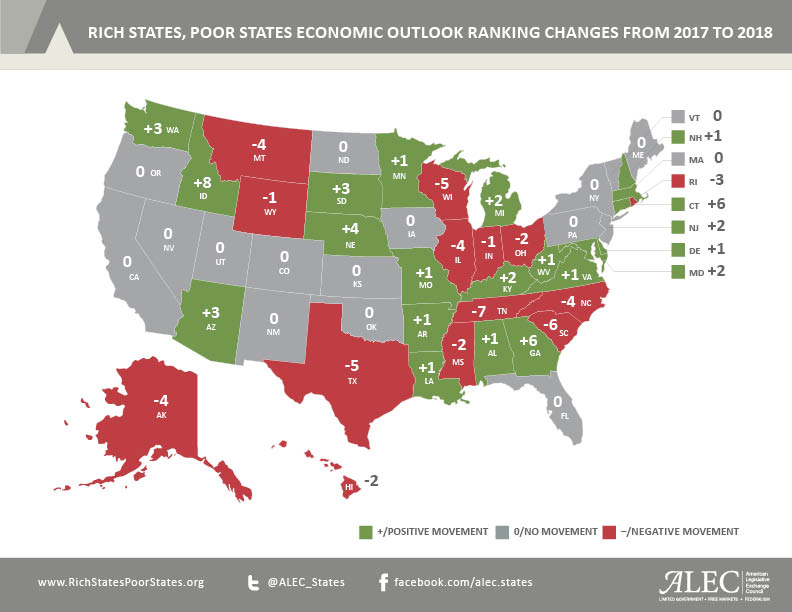Go somewhere with low tax burdens, light regulation, and limited government, young man. Grow up with your country in a red state.
That’s the conclusion of the annual “Rich States, Poor States” report from the conservative American Legislative Exchange Council, set to be released Tuesday.
Nine of the ten states with the best economic outlook for 2018 are red, mirrored inversely by nine of the ten states with the worst economic outlooks that are blue. Local politics and the fiscal policy they produce, the analysis suggests, determine whether or not a state economy will thrive.
[Also read: The swamp is draining (no, really)]
It’s a large part of the reason why Utah is No. 1 on the list and New York, No. 50, explains ALEC Chief Economist Jonathan Williams.

“You do see a focus on a limited government philosophy, lower taxes, and many of the things Republicans generally run on in those states,” says Williams. “Look at those states, and they’re very fiscally conservative guided states, and they have been for a very long time.”
In its eleventh edition, the annual report looks at 15 different factors from tax burdens, regulations, and labor policy. Along with Williams, the analysis was authored by Art Laffer and Stephen Moore of the Heritage Foundation, both economists and both, at one time or another, advisers to President Trump.
The breakout star of this edition is Idaho, which rose eight spots to come in second this year — a direct result of their reaction to the president’s federal tax reform.
The tax cuts led to an unexpected windfall of cash due to the elimination or reduction of many deductions, allowing more income to be taxed, a development that Williams likens to the post-Ronald Reagan tax cuts of 1986 where a number of states used that unexpected revenue to cut local taxes even further.
“They utilized directly the benefits of federal tax reform,” Williams argues, “which is the untold story of that development.” Idaho didn’t use that income to grow government. “Idaho put it back into the hands of individual and business taxpayers,” he says pointing to state lawmaker’s decision to cut personal and corporate tax rates from 7.4 to 6.93 percent.
Williams predicts a balkanization affect among competitive limited government states and a race to the bottom among their liberal counterparts. While New York and Vermont stayed stagnant at No. 49 and 50 respectively, he points out, Illinois fell six spots to No. 48 after they hiked top personal and corporate tax rates.


